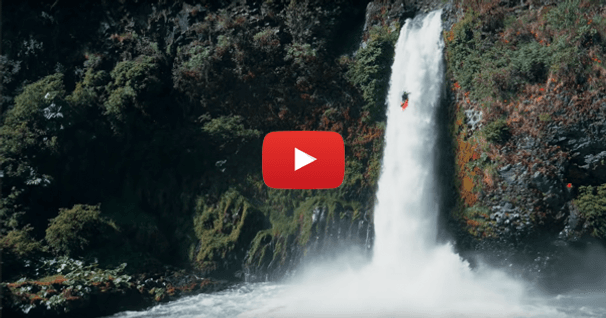Viewing Birds & Other Wildlife
Wildlife viewing, particularly birding, is an extremely popular activity among paddlers. The shallow draft accessibility and the stealth-like approach afforded the paddler of these silent craft, makes the kayak one of the ultimate crafts for viewing critters in their natural habitat.
However, the key to optimum viewing of fauna in their own environment goes beyond the quiet approach and the secretive observation. Sometimes just the opposite is true, sometimes a bold, frontal or flanking approach poses less a threat than sneaking silently from one point of cover to the next. In any case, knowing a bit about the animal's season/life routine can make wildlife viewing all the more productive.
Typically animals are engaged in a never-ending survival routine. They are constantly on guard against predators, continually feeding, and depending upon the season: propagating and then tending to their young. Know which cycle a particular viewable creature is in at any one time can greatly increase your chances of seeing the animal, and can enable you to do so with minimum impact on that animal.
Most of your shore/sea birds are foraging or stalking constantly. Those that tend to do so alone are ever cautious and weary of predators. Those that feed in flocks tend to have sentries at the outer perimeters who are quick to warn of danger. If you approach too closely you will definitely be picked up on their "radar".
A very critical time is during the nesting phase of a critters life. Birds such as kittiwakes build small, bowl-shaped nests on narrow ridges protruding from vertical walls high above the water. Even a slight disturbance can cause a bird to bolt, perhaps dislodging a chick. The breeding and nesting season offers some of the best viewing in the animal kingdom and also the most sensitive and responsible as well.
In general, whether your watchable wildlife is sea or land based, knowing its life cycle will give you the best information to develop the best viewing strategies.
It's helpful to learn the animal's characteristics and habits. Anticipating a certain action may enable you to catch a glimpse of a critter the second time around or encourage you to anticipate a sighting based upon information you have on its habitat and other factors.
I have found that doing my homework before I go out observing has been most beneficial, especially when birding or wildlife viewing in new areas. What are the typical critters inhabiting the area this time of year, which are indigenous, which are passer's through. Where might you most likely make a sighting? Learning traits help anticipate a particular animal and, upon observation, make an accurate identification.
Books are not waterproof, nor are there any adequate containers that keep them so and still allow you to use it as needed. So you are going to go through guides and such if you carry them out on the water. It's part of the price of successful viewing. Most natural resource areas offer a bird list or wildlife viewing checklist so you have a good idea what you might see. I grab a couple of these: one for field tallying and one to which I can transfer that information for the final record at home.
When selecting guidebooks, consider at least two or three. Cross referencing between art illustrations that show natural coloration in a pure form can be compared to how those colors are actually seen or not seen in the field. The glare off the water's surface can make that dark green or blue plumage appear black, it can obscure subtle markings and reflect misleading colors or hues off legs and feet depending upon the angle of viewing. The illustrative books can help narrow your options while the photo-based guide books can give you a more realistic image of what the bird looks like in natural lighting.
The main reason for having yet a third book is simply to have a crisp, clean home library version within reach upon a shelf.. Guidebooks tend to become ratty and dog-eared pretty fast in a marine environment.
That brings up another good tool a field journal. Everyone should record observations and thoughts from the field. It's soothing, informative and it helps one become a better "watcher". As far as a viewable wildlife goes, you can anticipate seeing a particular species and make pre-field notes and sketches right in the notebook tips to help you positively identify a new species, for example.
Tom Watson is an avid sea kayaker with 15 years experience in the North Pacific waters of Kodiak Island, Alaska. He is also a freelance writer whose articles have appeared in most of the popular kayaking publications. He is a frequent presenter at regional kayak symposia. Currently he is working on his third guidebook entitled "Think Like a Survivor" to be published by Created Publishing, International, for release in spring, 2005.
Related Articles
Watch the winners reel of the 2019 Kayak Session Short Film of the Year Awards. The paddlers in these…
Now in this episode, we're heading to a part of Québec that's known for its charming small villages,…
On land they are Jabba the Hutt impersonators from the Star Wars film sagas. When seen swimming under…
"Eager to catch up and excited to begin the river journey, I pushed off into the river - and then was…



